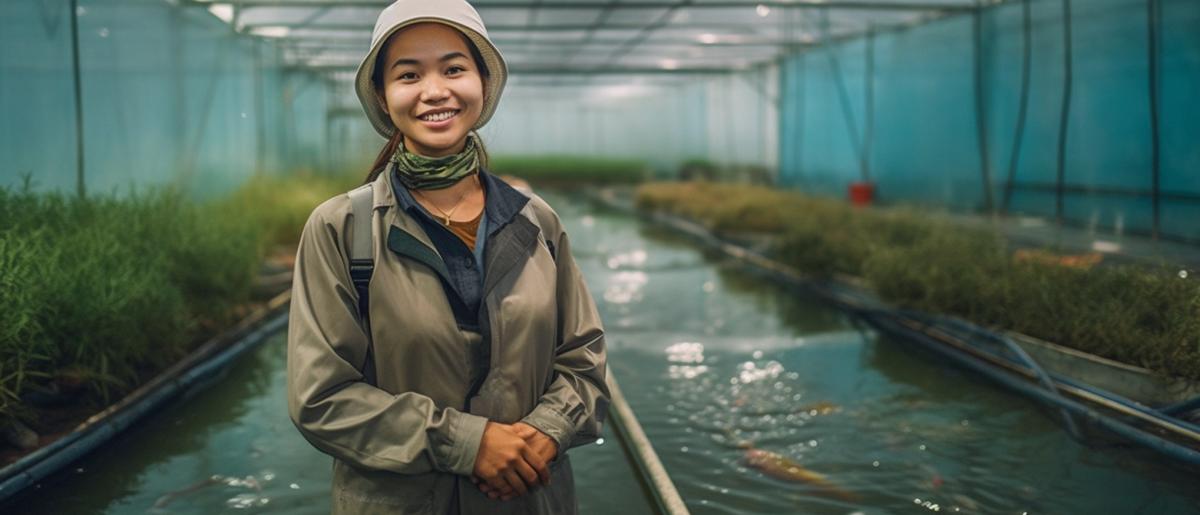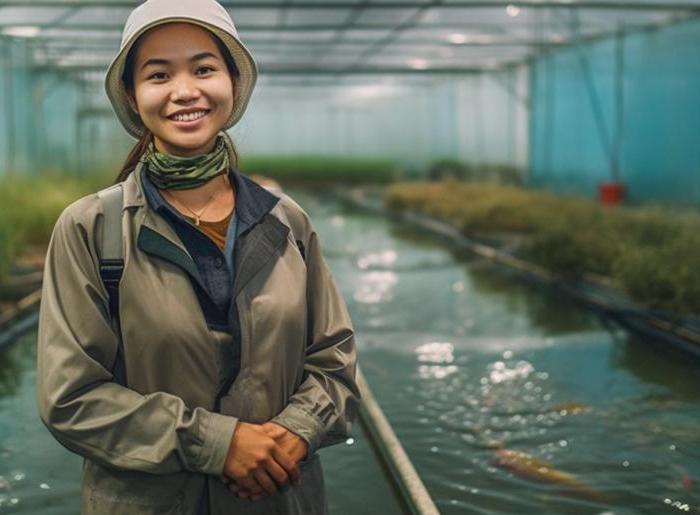

Aquaculture is a dynamic sector of the Australian economy, especially for those in the onshore realm. Nurturing a vibrant ecosystem of aquatic species, these hardworking entrepreneurs contribute significantly to the nation's food supply and employment. Yet, like any business, onshore aquaculturists often encounter financial gaps that could impede their operational capability and growth. That's where business loans can make their mark. Essential instruments in any aquaculturist's kit, these financial solutions provide the necessary funds for everything from upgrading equipment to streamlining processes, or even taking that leap into new markets. While obtaining a business loan may once have been seen as a daunting prospect, today's lending landscape has transformed it into a stepping stone rather than a stumbling block. For the onshore aquaculturist, these loans can be seen as a catalyst for success, promoting business sustainability and growth in a competitive industry landscape. By seeking a suitable loan, aquaculturists not only enrich their business operations, but they also contribute to Australia's thriving aquaculture industry and the broader national economy. Through the following sections, we will explore the dimensions of business loans for onshore aquaculturists.
Compare over 40+ lenders with one application.
Australia's aquaculture sector, specifically the Onshore Aquaculturists, play a pivotal role in bolstering the national economy and ensuring seafood sustainability. These contributors cultivate the underwater treasures right here on Australia's shores, providing a controlled environment that ensures the quality and healthiness of the produce. Operating within our coastal boundaries, Onshore Aquaculturists are key in managing the country's vital seafood supply chain. The local production reduces reliance on international imports, ensuring continuity even when global circumstances limit overseas transactions. The year-round supply is due to the controlled environments that allow for consistent and efficient yield. This industry offers broad-based economic benefits. It generates employment in regional areas where job initiatives might be scarce. Further, it results in a flow-on effect through associated industries like logistics, equipment manufacturers, and tourism. People visiting the country often enjoy fresh, locally produced aquatic options, enriching their cultural experience. Onshore Aquaculturists are not merely seafood suppliers; they are the custodians of the marine ecosystem. Their farming practises are strictly regulated. They therefore promote environmental sustainability by following efficient farming practises that reduce overfishing in the wild, thus aiding preservation of native species while maintaining biodiversity.
Learn about eligibility and how to apply.
Onshore Aquaculturists in Australia encounter a unique set of challenges that often stem from the unyielding nature of the environment and the volatile market. One of the most common obstacles is the sheer unpredictability of weather patterns and seasonal shifts, which significantly impact the optimal conditions required for aquaculture. Droughts, floods, and abrupt temperature changes can lead to disastrous consequences for the sector, seriously disrupting operations and financial standing. Coupled with environmental factors, policy changes can also create hurdles. Changes in regulations around water usage, waste disposal, and equipment can impose unforeseen costs and operational adjustments. For instance, regulations may limit the amount of water that can be drawn from natural sources or specify the methods that must be employed for waste disposal. Such regulatory changes can demand substantial financial resources for compliance, inversely affecting profit margins. In addition to these, market fluctuation is another challenging aspect. The demand for aquaculture products varies significantly and is influenced by numerous factors, including consumer trends, global competition, and overall economic climate. The unpredictable nature of these market forces can make financial planning difficult and can lead to periods of cash flow instability. To sustain and grow in this fluctuating landscape, embracing financial solutions like business loans become imperative. Onshore Aquaculturists can leverage these as a tool to manage the monetary aspects of these challenges effectively, ensuring their business stays afloat amid these adversities.
Calculate your repayment estimates and more.
Securing a business loan can offer a multitude of benefits to onshore aquaculturists. Primarily, it delivers an immediate influx of capital, which can be used to fund a wide array of operational requirements. For instance, aquaculture operations can be capital intensive, with frequent investment needed in acquisition or maintenance of aquatic farming systems, water quality monitoring equipment, and renewable energy sources for sustainable farming. A business loan can help meet these requirements, alleviating financial pressure and allowing for increased productivity. Next, a business loan can also facilitate growth and expansion. Whether it's leasing additional water bodies, diversifying into new aquatic species, or scaling up production to meet increasing demand, a business loan can provide the necessary financial support. Unlike traditional investments, the terms of a business loan can be tailored to suit the unique cash flow patterns of aquaculture businesses, ensuring repayments won't interfere with the operational budget. Lastly, let's not forget that a business loan can play a significant role in risk mitigation. Onshore aquaculture involves specific challenges such as fluctuating market prices, changing weather patterns, and potential disease outbreaks among cultured species. A business loan can form a solid financial buffer against these uncertainties, offering the business much-needed stability. No longer would unexpected expenses signal a crisis, but merely a challenge to be met with confidence. A business loan to an onshore aquaculturist is more than a financial aid, it's an assurance of resilience in a challenging industry.
In Australia, onshore aquaculturists may avail of various business loans for bolstering their operations. This includes asset loans that enable them to update or purchase new equipment, working capital loans to ease day-to-day expenses, and unsecured business loans for other miscellaneous needs. These versatile loan options cater to a diverse range of aquaculture business requirements.
There are several types of business loans in Australia that can benefit Onshore Aquaculturists. Each of these loan types has its unique features, advantages, and potential disadvantages. Here are some of the most common types of business loans for Onshore Aquaculturists:
Business Overdraft
An overdraft loan provides aquaculturists with a safety net. The money can be used as working capital, which can assist in the daily operations of a business. It's a great way to cover short-term expenses when cash flow is tight.',
Asset Finance
Asset loans are used to purchase new equipment or vehicles. For onshore aquaculturists, this could range from new harvesting machinery, trucks for transport or even setup of new sheds or tanks.',
Trade Finance
Trade finance loans offer aquaculturists the ability to manage cash flow during the period of exporting the seafood to the point when the customer pays in full.',
Line of Credit
This type of loan gives aquaculturists the flexibility to draw funds as needed, up to a limit set by the lender, and interest is only paid on the drawn amount.',
Term Loan
A term loan is a lump sum loan repaid over a set repayment period. This can be useful for onshore aquaculturists for expansion or acquisition.',
Equipment Finance
Equipment finance loans are ideal for aquaculturists who need high-end technology or equipment to enhance their operations. This type of loan allows businesses to spread the equipment cost over a period of time.',
Invoice Financing
Invoice financing allows aquaculturists to unlock the money tied up in their unpaid invoices. It's a helpful way to manage cash flow fluctuations.',
Commercial Property Loan
A commercial property loan can assist in acquiring new farm land or improving existing onshore establishments.',
Agricultural Loan
These loans are tailored to meet the demands of onshore aquaculturists, providing funds for key business operations, equipment updates or expansion plans.',
Unsecured Business Loan
This is a type of business loan where onshore aquaculturists don't need to provide an asset as security. The interest rates tend to be higher, but it provides flexibility and quick access to required funding.
Business loans can provide vital financial support for Onshore Aquaculturists in Australia. Such loans can be crucial for aquaculture growth and expansion, purchasing necessary equipment for sustainable practises or maintaining cash flow during low seasons. Simple and straightforward, these loans address diverse needs of the aquaculture industry.
Here are some common reasons Onshore Aquaculturists use business loans:
Modernising Aquaculture Installations
Updating or expanding existing aquaculture infrastructure can significantly increase production capability, bolster sustainability, and enhance operational efficacy. Business loans make these ambitious projects achievable.
Acquiring New Technology
To stay competitive in today's market, onshore aquaculturists must adapt to emerging technologies. These may include automated feeding systems, waste removal machinery, or state-of-the-art habitat monitoring equipment. A business loan can provide the necessary funds.
Purchasing Additional Stock
Whether it's buying more fish, oysters, shrimps, or seaweed varieties, business loans can cover such expenses and increase inventory, ensuring consistent supply.
Training and Education
Skilled workers are the backbone of successful onshore aquaculture businesses. Business loans can provide funds for training courses and education programmes, ensuring that staff members are well trained with latest industry practises.
Marketing and Branding
A strong brand and robust marketing strategy can increase product reach and attract new customers. Business loans can finance marketing campaigns, website upgrades, and other promotional activities.
Investing in Sustainable Practices
As consumers become more eco-conscious, investing in sustainable fishing techniques and practises can pay off in the long run. Business loans help finance such transitions.
Research and Development
Innovation is critical in aquaculture. Dedicated funds from business loans can drive research and development, leading to product diversification and improved operational methods.
Improving Packaging and Distribution
To maintain product freshness and ensure wider reach, robust packaging and efficient distribution systems are essential. Business loans can help optimise these processes by financing equipment purchases and logistics operations.
Buying Real Estate
As businesses grow, more space may be needed for operations and administration. Business loans can be used to purchase new land or facilities.
Liquid Cash Reserves
Unexpected expenses could disrupt operations. Business loans can act as a safety net, providing financial reservoirs to manage unexpected costs and maintain smooth operations.
To estimate your monthly repayments and the total cost of the loan, input the loan amount, loan term and interest rate into the calculator below. This helps you plan your budget and choose the most suitable loan terms.
These helpful FAQs will help you find the answers you need. If you can't find what you're looking for, you can request a callback below.